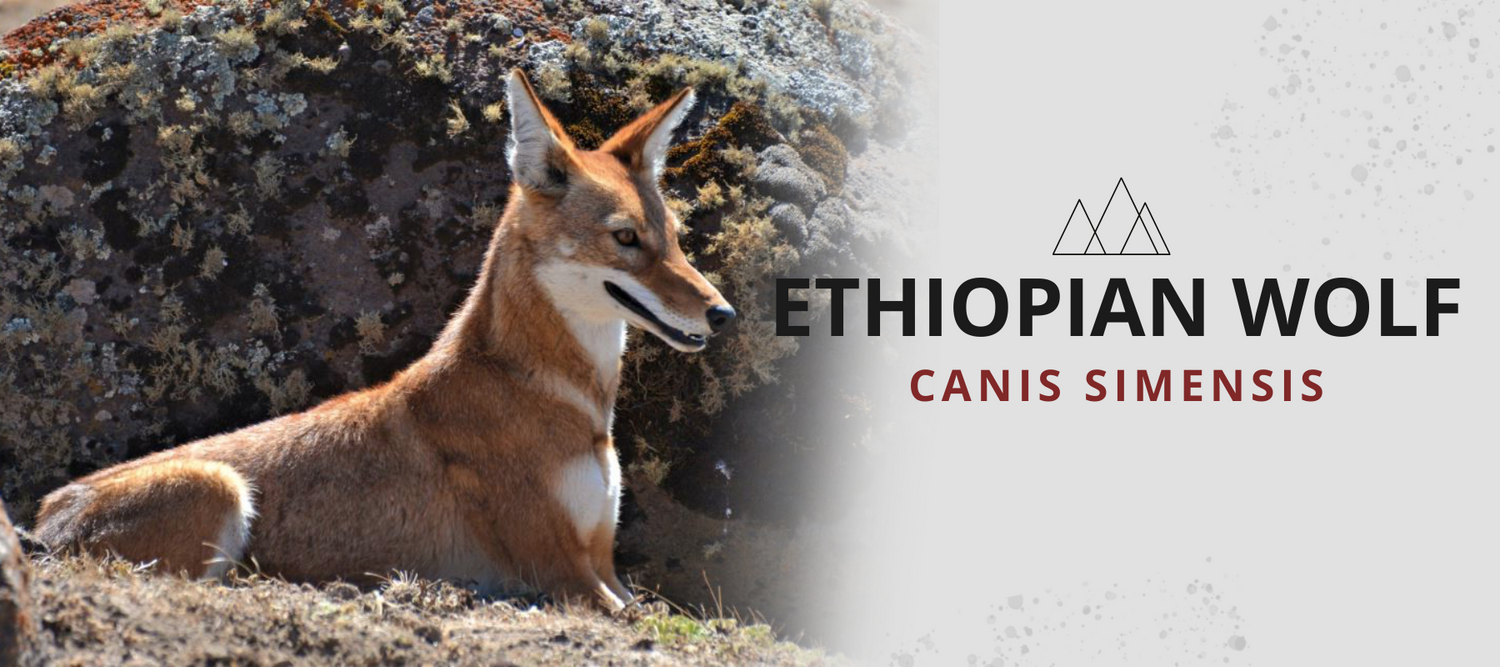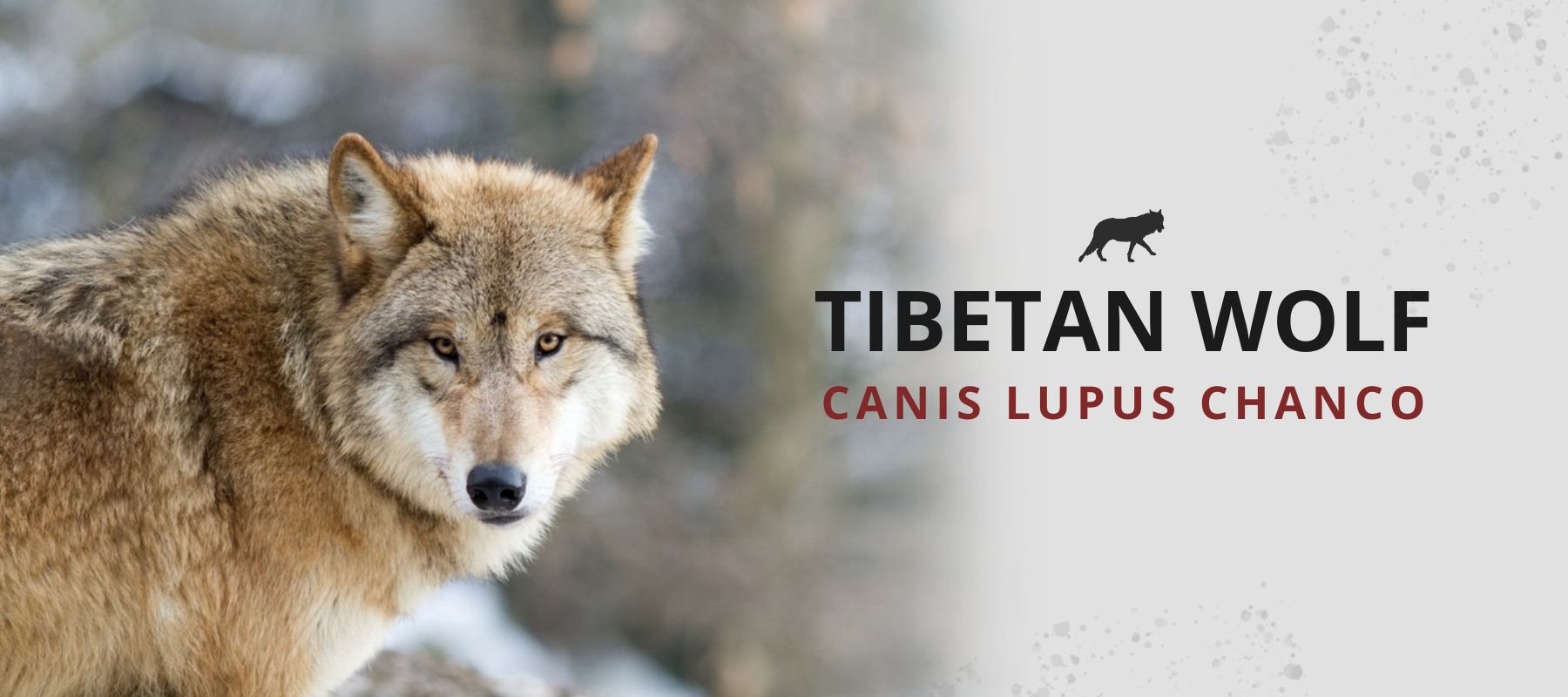
CANIS SIMENSIS
The Ethiopian wolf (Canis simensis), also known as the Abyssinian wolf or Simian jackal, is a carnivorous mammal belonging to the family Canidae. This wolf is the second rarest canid in the world after the red wolf. The Ethiopian wolf belongs to the genus Canis like the dingo and the coyote.
- Common name: Ethiopian wolf
- Scientific name: Canis simensis
- Other names: Simien jackal, Simien fox, Abyssinian wolf
- Specie: Gray wolf
- Type: Mammals
- Diet: Carnivore
- Size: 2,7 to 3,2 feet (84 to 100 cm)
- Weight: 24 to 40 lbs (11 to 20kg)
ETHIOPIAN WOLF DESCRIPTION
The Ethiopian wolf is the most endangered canid in Africa. It is generally similar to a coyote in shape and size. It averages 2,7 to 3,2 feet long without a tail and 1,7 to 2 feet high and weighs between 24 to 44 lbs (11 to 20 kg). Tail length is 0,9 to 1,3 feet.
The Ethiopian wolf has long legs and a long pointed snout. Its fur is a light tawny red that tends to ginger depending on the individual. Unlike the Arab wolf, with which it shares many similarities, the Ethiopian wolf has many white markings on its fur, chin, legs, and tail.
The demarcation between red and white fur is very pronounced and distinct. Ethiopian wolf species is also recognizable by a common feature that is a white spot on the cheeks as well as under the eyes. As well as the chin, lower snout and throat, which are also white.
The wolf's tail is distinguished by a black stripe running the entire length. Females become more yellowish during the breeding season, and juveniles have an anthracite gray coat.
Ears are large and pointed. Their front paws are made up of five toes while their hind paws have only four. This wolf also has a narrow snout and small sharp teeth that excel at hunting small prey and stalking them even in their burrows.

ETHIOPIAN WOLF HABITAT
The Ethiopian wolf is native and endemic to the highlands of Ethiopia. To date, the largest population of Ethiopian wolves is found in the Bale Mountains National Park, with 160 individuals. There are a few populations in the Simian Mountains but their observation is very random.
As its name suggests, this wolf is endemic to the Ethiopian mountains where it can be observed at altitudes of 3,000 to 4,370 m. It is particularly fond of the plains at high altitudes. In 2008, the total population of Ethiopian wolves was estimated at about 500 individuals, with nearly 250 breeding specimens.

ETHIOPIAN WOLF DIET
The Ethiopian wolf is a carnivorous animal. It feeds mainly on rodents such as the giant mole rat which is its favorite food. In the absence of the latter, the wolf will turn to smaller prey like the common mole rat. It also eats chicks, bird eggs and young ungulates (such as mountain nyala) and sometimes carrion.
The prey is usually caught in their burrows in which it sneaks in with great ease thanks to its long and thin muzzle to give its prey no chance. Sometimes the Ethiopian wolf hunts in packs to prey on young antelopes, lambs and hares.

ETHIOPIAN WOLF BREEDING
The Ethiopian wolf breeds once a year between October and January. After a gestation period of 60 to 62 days, the dominant female gives birth to a litter of 2 to 6 cubs. In anticipation of the end of the gestation period, the female takes care of setting up a den to protect her young until they reach sexual maturity. Often, the den is made under a rock, in a rock crevice or by digging into the ground. The newborns have closed eyes and are toothless at birth.
They are dark gray with a buffy spot on the chest. At about 3 weeks old, the coat begins to take on its normal adult color and the wolf pups begin to emerge from the den. Once the cubs are big enough and strong enough, the wolf moves to more secluded areas, sometimes up to 1300 m in the mountains.
The development of cubs is in 3 stages:
- The first covers between 1 and 4 weeks when they are totally dependent on their mother for milk.
- The dairy diet is then supplemented with meat and other solid foods regurgitated by members of the pack when the cubs reach 5-10 weeks old.
- Finally, from the 10th week to about 6 months old, the wolf pups are fed exclusively with fresh meat hunted by the adult members of the pack. Once weaned, the puppies will feed on their own.
The Ethiopian wolf reaches its adult appearance and sexual maturity at 2 years old. Data on life expectancy is currently insufficient. Nevertheless, it is estimated that the Ethiopian wolf can live between 8 and 10 years in the wild. The currently known maximum age for this species is 12 years.

ETHIOPIAN WOLF BEHAVIOR
The Ethiopian wolf lives in territorial packs composed of 3 to 13 individuals. Pack members tend to feed alone. The pack patrol and mark its territory at dusk and dawn to mark their territory. Then, they rest together at night. Strong social bonds exist between group members, who greet each other enthusiastically. Male wolves rarely disperse, while females may leave the pack once the last litter can fend for itself to look for an opportunity to breed elsewhere.
The Ethiopian wolf growls and howls in different ways. It is able to emit several types of vocalizations depending on the situation or imminent danger. The growl is used when there is a threat. Finally, the wolf howl can be heard up to 5 km away. It can be practiced alone or in a group and its long range allows it to easily communicate with the members of its pack but also to warn other packs that the territory is occupied.

ETHIOPIAN WOLF THREATS
The Ethiopian wolf is one of the most endangered canids in the world. An important part of the last representatives of the species has been the victim of an epizootic in the Mount Bale National Park. Between the end of September 2003 and January 2004, rabies killed 65 wolves, more than 3/4 of the population in the Web Valley region. Rabies may have been introduced by sheepdogs that come to graze their herds in the park.
Their numbers have been greatly reduced in recent years, mainly due to dog-borne diseases and increased pastoral activity in the highlands. While populations are increasingly isolated by habitat fragmentation, the likelihood of local extinctions has increased.
Rabies and distemper transmitted from domestic dogs to wolves, and hybridization resulting from breeding with domestic dogs further threaten the survival of this species. Only about a dozen packs remain, representing about 500 individuals.

ETHIOPIAN WOLF PRESERVATION
The Ethiopian wolf is an endangered species. The IUCN Red List lists this wolf as Endangered.
Seriously threatened by the rabies epizootic that occurred in 2003, a vaccination program financially supported by CEPA (Conservation of Animal Species and Populations) was set up in the Web Valley in November 2003 by the Ethiopian Wolf Conservation Program.
Ethiopian wolf preservation territorial laws protect the wolf from hunting. Efforts have been made to preserve the species from dog-wolf transmissible diseases that threaten the species, such as rabies. Hybridization is also being prevented, which significantly reduce the gene pool of the Ethiopian wolf species.
Despite all these measures, the Ethiopian wolf remains endangered. To date, the authorities continue to closely monitor the evolution of the Ethiopian wolf populations.
To support Ethiopian wolf preservation and claim your love for wolves, check out our wolf canvas collection, and discover the amazing Tibetan wolf.


